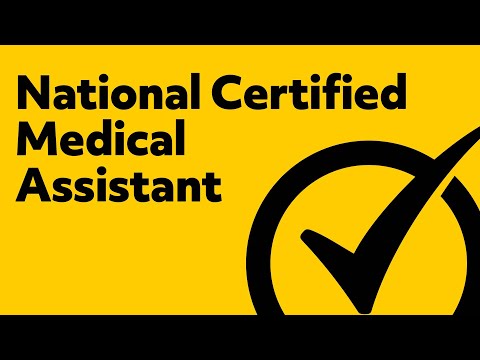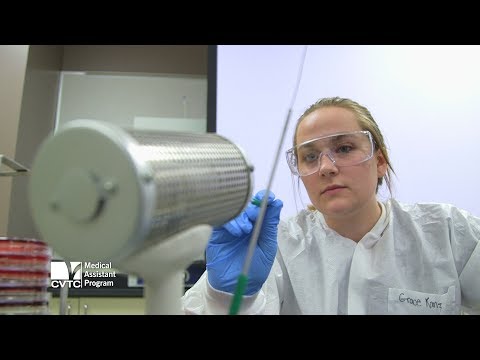Phlebotomist vs Medical Assistant: Which One is Right for You?
Contents
- Phlebotomist vs medical assistant The Difference
- Phlebotomist vs medical assistant The Similarities
- Phlebotomist vs Medical Assistant: The Pros and Cons
- Phlebotomist vs Medical Assistant: The Salary
- Phlebotomist vs Medical Assistant: The Training
- Phlebotomist vs Medical Assistant: The Job Outlook
- Phlebotomist vs Medical Assistant: The Bottom Line
Considering a career in the medical field? Not sure if you should become a phlebotomist or medical assistant? Check out this blog post to learn more about the differences between these two roles and which one might be a better fit for you.
Checkout this video:
Phlebotomist vs medical assistant The Difference
If you’re considering a career in the medical field, you may be wondering what the difference is between a Phlebotomist and a medical assistant Both roles are important in providing healthcare services, but there are some key differences between the two.
A Phlebotomist is a medical professional who is trained to collect blood samples from patients. They are often responsible for drawing blood from patients who are undergoing medical procedures or tests, and they may also be responsible for transporting the blood samples to laboratories for testing.
A medical assistant on the other hand, is a healthcare professional who provides support to doctors and other medical staff. They may be responsible for tasks such as taking patient histories, scheduling appointments, and answering phone calls. They may also assist with minor medical procedures, such as giving injections or taking vital signs.
Phlebotomist vs medical assistant The Similarities
Both phlebotomists and Medical assistants are important members of the healthcare team. They both work closely with patients and are responsible for providing quality care.
Phlebotomists are responsible for drawing blood from patients. They must be skilled in order to minimize pain and discomfort for the patient. Medical Assistants are responsible for a variety of tasks, including taking patient medical histories, scheduling appointments, and assisting with examinations.
While there are some similarities between these two positions, there are also some key differences. Phlebotomists typically work in hospitals or clinics, while medical assistants may work in a variety of settings, such as doctor’s offices, clinics, or hospitals. Medical assistants also have more responsibilities than phlebotomists.
If you’re interested in a career in healthcare, you may be wondering which one is right for you. To help you make a decision, we’ve provided a comparison of the two positions below.
Phlebotomist vs Medical Assistant: The Pros and Cons
Are you interested in a career in the medical field? If so, you may be wondering what the difference is between a phlebotomist and a medical assistant. Both roles are important in healthcare, but they have different duties. Keep reading to learn more about the pros and cons of each profession to see which one is right for you.
Phlebotomist
A phlebotomist is a healthcare professional who specializes in drawing blood. Phlebotomists work in hospitals, clinics, and blood donation centers. They are responsible for taking blood samples from patients and preparing them for testing. Phlebotomists must have excellent attention to detail and be able to remain calm under pressure. They must also be able to work quickly and efficiently.
Pros:
-Phlebotomists can find employment in a variety of settings.
-No formal education beyond high school is required to become a phlebotomist.
-Phlebotomy is a low-stress job that allows you to help others.
-Drawing blood is not generally considered a hazardous occupation.
Cons:
-Phlebotomists may have to work with difficult or uncooperative patients.
-The job can be physically demanding, as phlebotomists may have to stand for long periods of time or lift heavy patients.
-The job may also be emotionally demanding, as some patients may be fearful or anxious about having their blood drawn.
Medical Assistant
A medical assistant is a healthcare professional who provides direct patient care and performs administrative duties in a medical office or clinic setting. Medical assistants must be able to multitask and remain calm under pressure. They must also have excellent communication skills and be able to work well with others. Some states require medical assistants to complete an accredited training program and pass an exam before they can begin working.
Pros:
-Medical assistants can find employment in a variety of settings, including hospitals, clinics, and doctors’ offices.
-Medical assisting is a low-stress job that allows you to help others on a daily basis.
-The job is generally well paid, with median annual earnings of $33,610 as of May 2018 . https://www.bls/gov/ooh/healthcare/medical-assistants#tab-6) . This amount can increase based on experience, location, and other factors.. Medical assistants also often receive benefits such as health insurance and paid vacation days.. These benefits can add up to 30% or more of their total compensation.. In addition, many employers offer bonuses and other incentives.. For example, some employers offer reimbursement for certification exams..
Phlebotomist vs Medical Assistant: The Salary
Assuming you have already decided that you want to enter the medical field, the next question you need to answer is what role you want to play. Do you want to be a phlebotomist or a medical assistant? Both positions have their pros and cons, and the right choice for you will depend on your individual circumstances.
One of the biggest factors to consider is salary. Medical assistants make a median salary of $33,610 per year, while phlebotomists make a median salary of $32,710 per year. So, there is only a $1,000 difference in median salaries. However, keep in mind that medical assistants typically have more responsibilities than phlebotomists, so their higher salary is justified.
Phlebotomist vs Medical Assistant: The Training
There’s a big difference between the training required to become a phlebotomist vs medical assistant. Phlebotomists need to be certified, which requires completing an accredited phlebotomy training program and passing an exam. Medical assistants, on the other hand, don’t need to be certified but they must complete an accredited medical assistant training program. Both types of programs can be completed in as little as 8 months.
The main difference between the two roles is that phlebotomists draw blood and medical assistants perform a variety of administrative and clinical tasks. Both roles are important in healthcare settings, but which one is right for you?
If you’re interested in a career in healthcare but aren’t sure which route to take, keep reading to learn more about the training required for both phlebotomists and medical assistants.
Phlebotomist vs Medical Assistant: The Job Outlook
The job market for both phlebotomists and medical assistants is expected to grow in the coming years. According to the Bureau of Labor Statistics, the job outlook for phlebotomists is expected to grow by 25% from 2019 to 2029. This is much faster than the average for all occupations. The job outlook for medical assistants is projected to grow by 19% from 2019 to 2029, also much faster than the average for all occupations.
Phlebotomist vs Medical Assistant: The Bottom Line
The bottom line is that both phlebotomists and medical assistants are important members of the healthcare team. If you’re interested in a career in healthcare, either one could be a good choice for you. The best way to decide which is right for you is to learn as much as you can about each profession and then make a decision based on your own interests, skills, and goals.







